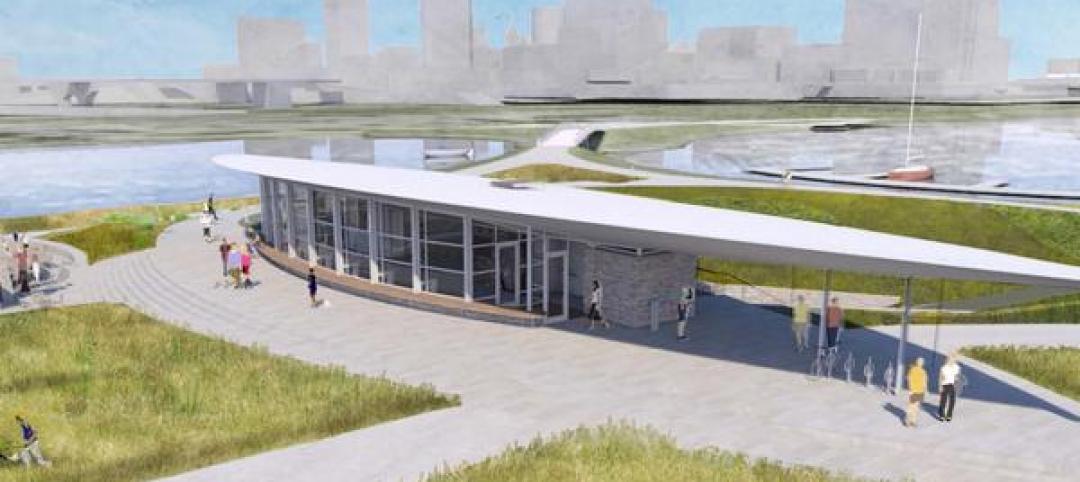Green building has not gotten as much traction as it should, given its many benefits, writes Lance Hosey, Chief Sustainability Officer with RTKL.
Despite reports that LEED-certified buildings can cut greenhouse gas emissions and water consumption by half, while costing 25% less to operate, only about 1% of the U.S. building stock is green. Hosey attributes this situation to six misperceptions about sustainable design:
1. Myth: Sustainability Equals Environmentalism. Reality: Green design is not just for tree huggers. It also produces economic value.
2. Myth: Sustainability Equals Technology. Reality: Sustainability is not just about solar panels and wind turbines.
3. Myth: Sustainable Design Costs Too Much. Reality: Today, LEED-certified buildings can be built at the same cost or even lower cost than conventional construction.
4. Myth: Sustainable Design Takes More Time. Reality: Integrated design, which brings together a project's key stakeholders, designers, consultants and contractors early to get consensus on goals, can save time by ensuring more thorough coordination and avoiding costly changes later.
5. Myth: Sustainability Isn't About Design. Reality: Green design is not just about specifications in a technical manual. For instance, decisions about a building’s shape have a significant impact on the resources needed.
6. Myth: Sustainable Design Isn't Beautiful. Reality: The look and feel of design are essential to sustainability. “Following the lessons of sustainability to their logical conclusion will inspire more designers to reconsider the impact of every decision, including form and image,” Hosey says.
Related Stories
Green | Apr 20, 2015
USGBC opens public comment period for LEED for existing multifamily buildings
The new LEED Operations and Maintenance: Multifamily program will offer solutions for existing multifamily projects with at least 20 units.
Cultural Facilities | Apr 16, 2015
Milwaukee’s Lakeshore State Park visitor center will be ‘off the grid’
The plans also include a built-in wastewater treatment system and rainwater collection.
Green | Apr 16, 2015
Passive House Institute introduces new categories for building certification
The new evaluation procedure considers the building in an environment where only renewable energy is used. Sun and wind provide the primary electricity.
Green | Apr 16, 2015
New version of Building Energy Data Exchange Specification launched
BEDES is a dictionary that facilitates consistent exchange of building characteristics and energy use data between tools and databases in the building energy efficiency sector.
Green | Apr 14, 2015
USGBC will recognize energy and water standards for the Living Building Challenge
This move means that projects achieving the energy and water requirements in Living Building Challenge will be considered as technically equivalent to LEED.
Green | Apr 7, 2015
USGBC survey shows Fortune 200 companies prioritize green building
The world’s top-performing companies are prioritizing sustainability as part of their corporate social responsibility efforts, and a majority of them are using LEED to achieve their goals, according to the new survey.
Codes and Standards | Apr 6, 2015
DOE releases Better Buildings Workforce Guidelines
The guidelines are aimed at strengthening and streamlining commercial building workforce training and certification programs for workers in energy auditing, building commissioning, building operations, and energy management.
Green | Apr 3, 2015
Georgia may ban use of LEED on state buildings
Georgia's state legislature is considering a measure to require all state buildings to only use green building standards that permit the use of Georgia's lumber.
Green | Apr 3, 2015
Energy benchmarking law helps make D.C. top ranked Energy Star city
First-in-the-nation law requires public reporting of annual energy performance
Green | Apr 1, 2015
Global wind power installations expected to slow through 2019
After a 20% falloff in 2013, the global wind power industry made a strong comeback in 2014, with a record 51.2 gigawatts installed. But a new report from Navigant Research forecasts a curtailment in growth.













